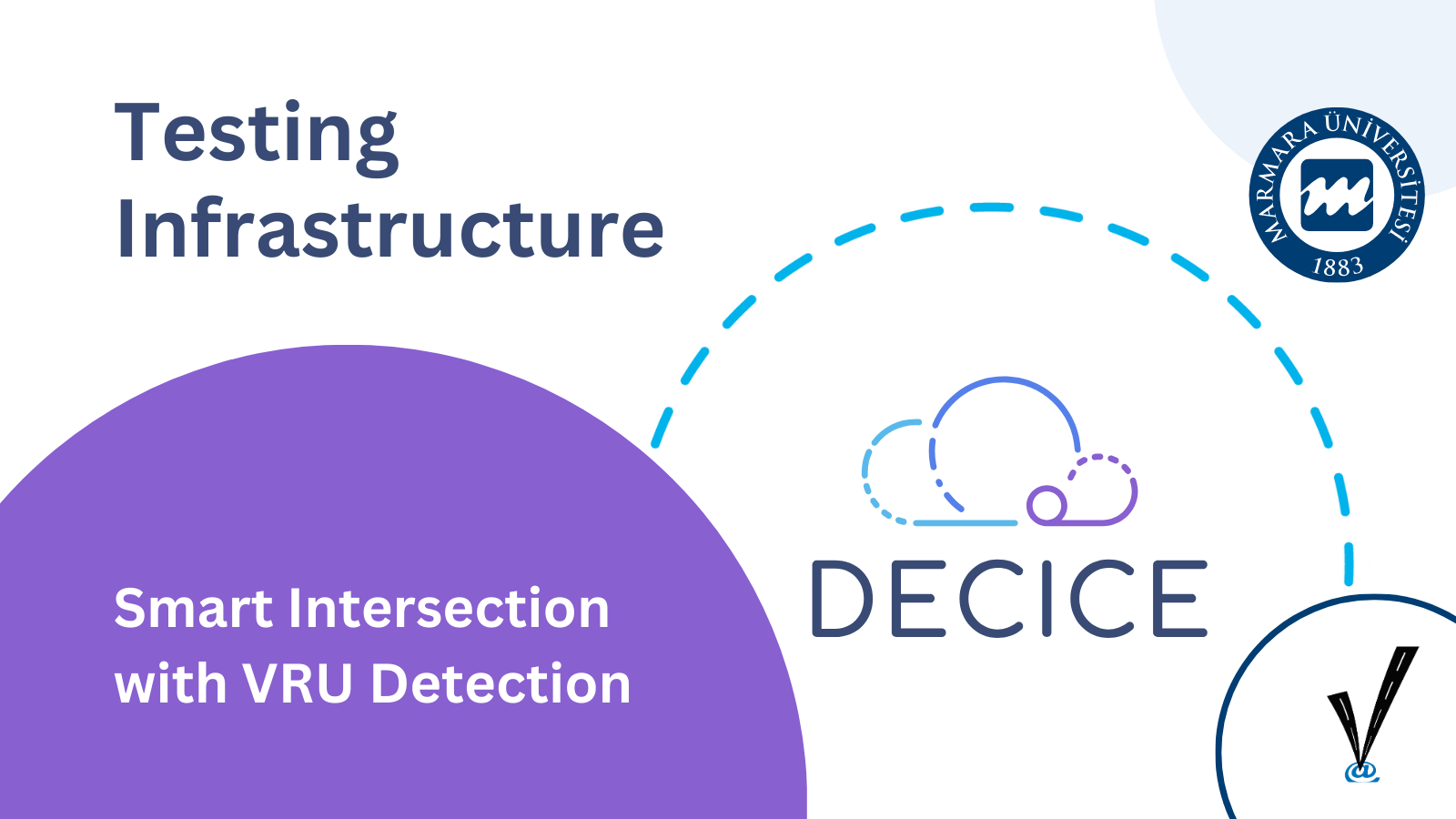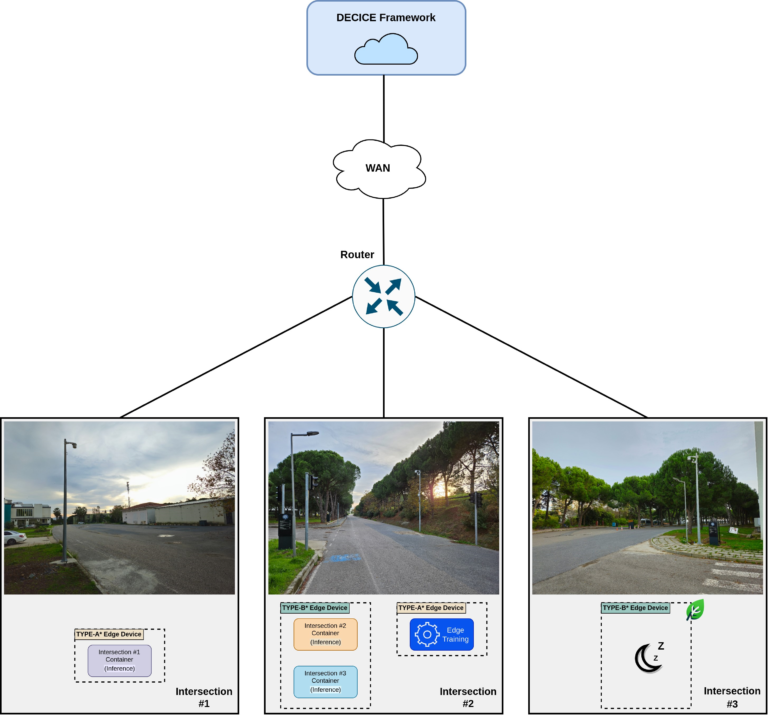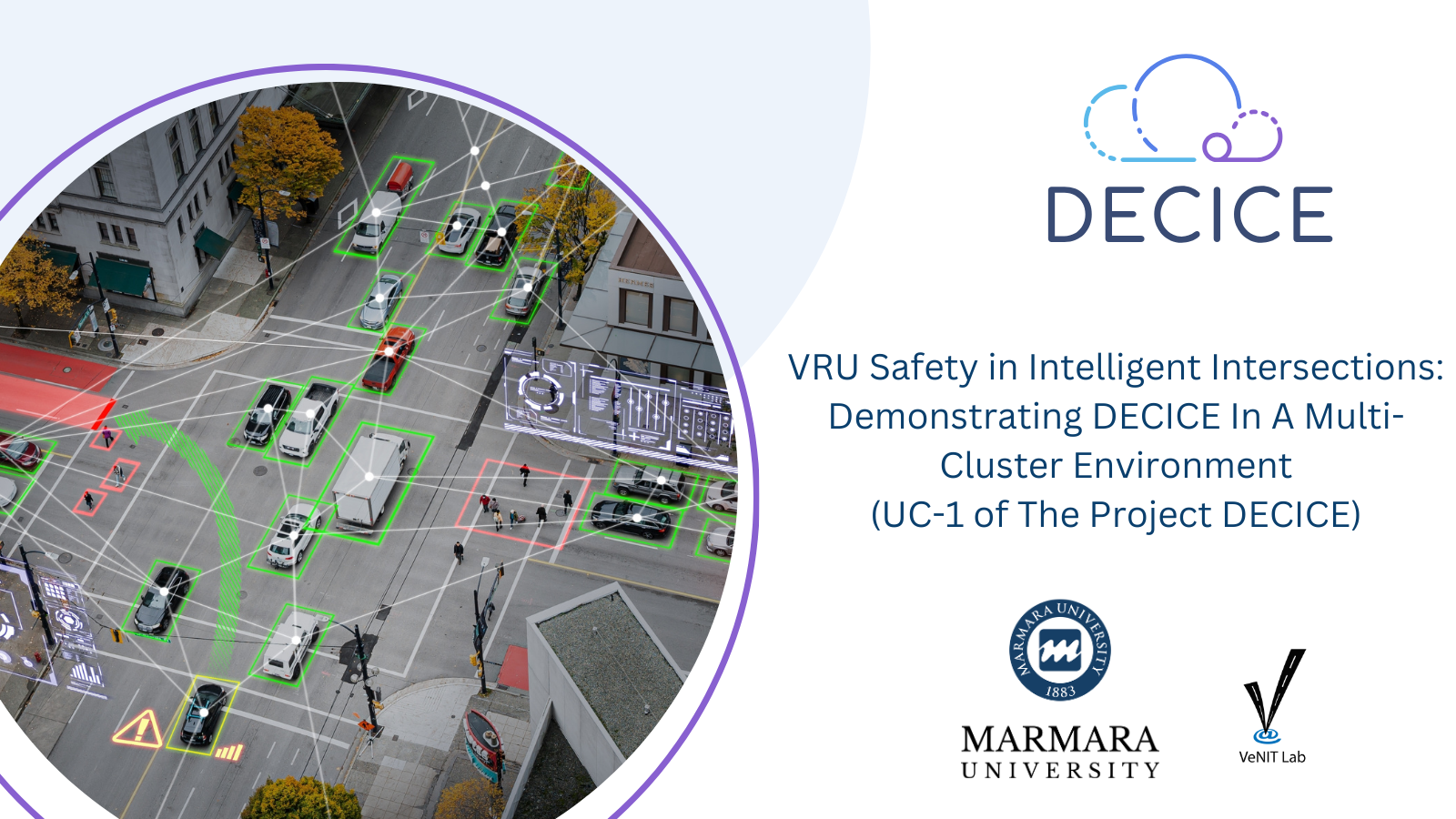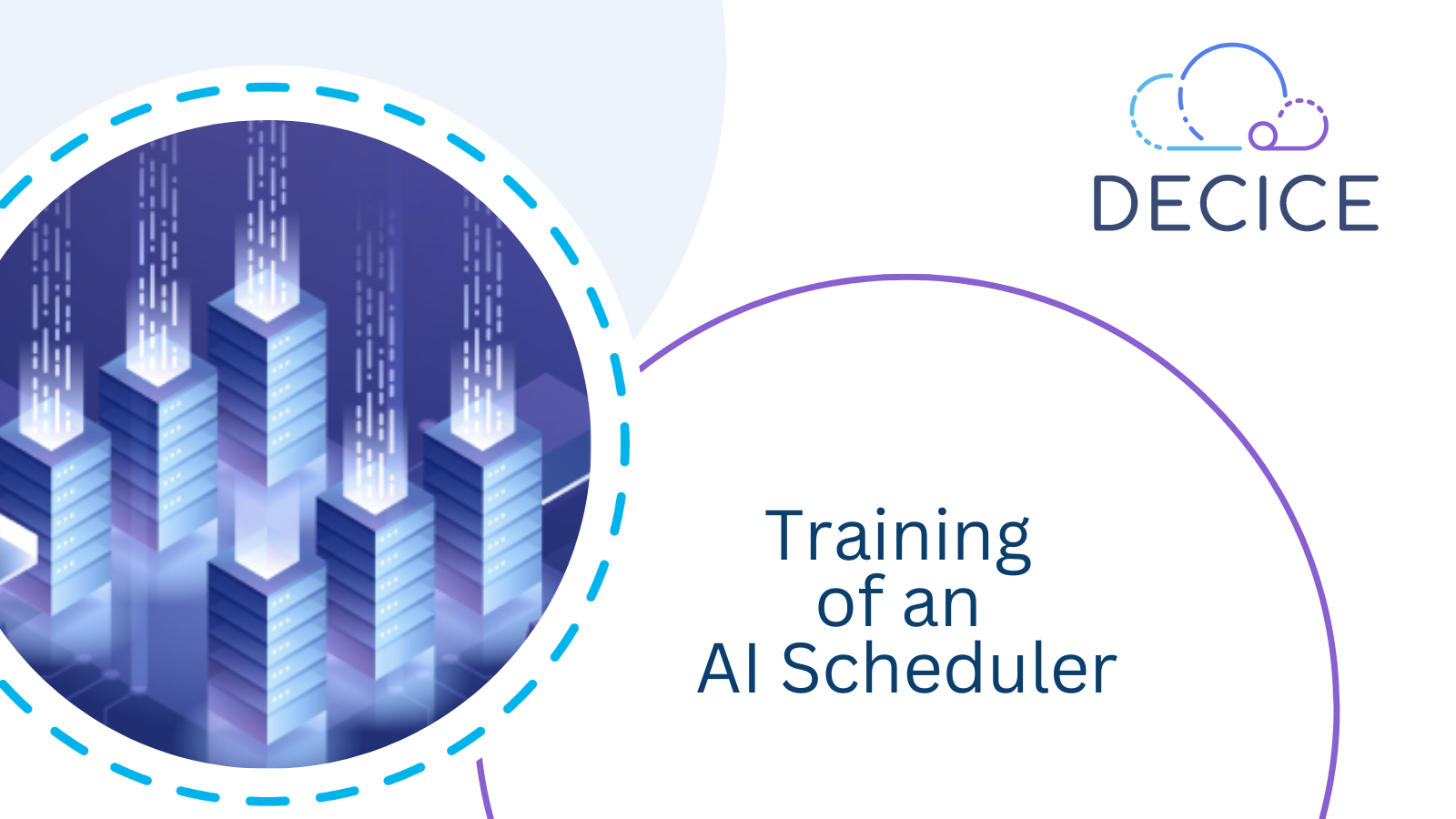
Marmara University – VeNIT Lab’s Testing Infrastructure for “Smart Intersection with VRU Detection”
Intersection areas pose significant challenges for autonomous and conventional vehicles, particularly due to Vulnerable Road Users (VRU) being obscured by environmental elements like buildings and large vehicles [1]. Significance of the VRU-involved accidents necessitate the integration of specialized detection systems for intersections [2, 3]. Marmara University – VeNIT Lab addresses this critical need by providing a comprehensive infrastructure consisting of multiple intersection areas within the DECICE project. This infrastructure is key to the ‘Smart Intersection with VRU Detection’ use case, enabling real-time responses and alerts to enhance safety. In collaboration with BigTRI, Marmara University leverages C-ITS applications to alert road users effectively, thereby mitigating accident risks.
The VRU application provides critical information to the nearby vehicles by detecting VRUs in intersection areas and broadcasting the information using V2X communications. The 3D location and orientation of the VRUs play an important role in the decision-making process of autonomous vehicles or assist drivers if the vehicle is human-operated. This data enables vehicles to adjust their speed and trajectory, significantly reducing the risk of accidents and improving traffic flow efficiency at intersections [4]. Until now, the application was developed using images from a simulation environment similar to the campus area, and a deep-learning-based 3D object localization model is constructed.
VeNIT Lab has established an infrastructure within its campus for the VRU application, consisting of three intersection areas. The construction processes consist of the installment of an RGB camera, a Road Side Unit (RSU), edge devices, and an access point per intersection. Installation work has just been completed. Real-time analysis of the captured video will begin very soon.
The DECICE framework will orchestrate the resources of the edge devices, ensuring the provision of real-time responses to vehicles. Additionally, an AI-driven scheduler within the framework will support dynamic load balancing, creating an energy-efficient computational orchestration. The presence of multiple intersection areas allows for diverse data collection and load distribution across different nodes. The infrastructure will also provide various metrics, such as latency and CPU/GPU usage.
The illustration below highlights an example of resource assignment within multiple-intersection scenario.

Marmara University – VeNIT Lab’s test infrastructure guides urban traffic safety and management within the VRU use case of the DECICE project. The DECICE framework, supported by the university’s technological contributions, stands out for its efficient management of the computing continuum. The ability to dynamically adapt to changing conditions highlights the framework’s capacity to facilitate cooperative services in connected mobility.
Author: Anılcan Bulut (VeNIT Lab – Marmara University), Mujdat Soyturk (VeNIT Lab – Marmara University)
Reference
[1] Cheng, Hao, et al. “Interaction Detection Between Vehicles and Vulnerable Road Users: A Deep Generative Approach with Attention.” arXiv preprint arXiv:2105.03891 (2021).
[2] Choi, Eun-Ha. Crash factors in intersection-related crashes: An on-scene perspective. No. HS-811 366. 2010.
[3] Habibovic, Azra, and Johan Davidsson. “Requirements of a system to reduce car-to-vulnerable road user crashes in urban intersections.” Accident Analysis & Prevention 43.4 (2011): 1570-1580.
[4] Gholamhosseinian, Ashkan, and Jochen Seitz. “A comprehensive survey on cooperative intersection management for heterogeneous connected vehicles.” IEEE Access 10 (2022): 7937-7972.
Links
Marmara University: https://www.marmara.edu.tr/
Vanit Lab: https://www.venit.org/
Keywords
c-its, v2x, vru, connected cars, edge computing, artificial intelligence, urban traffic safety, application, communication


